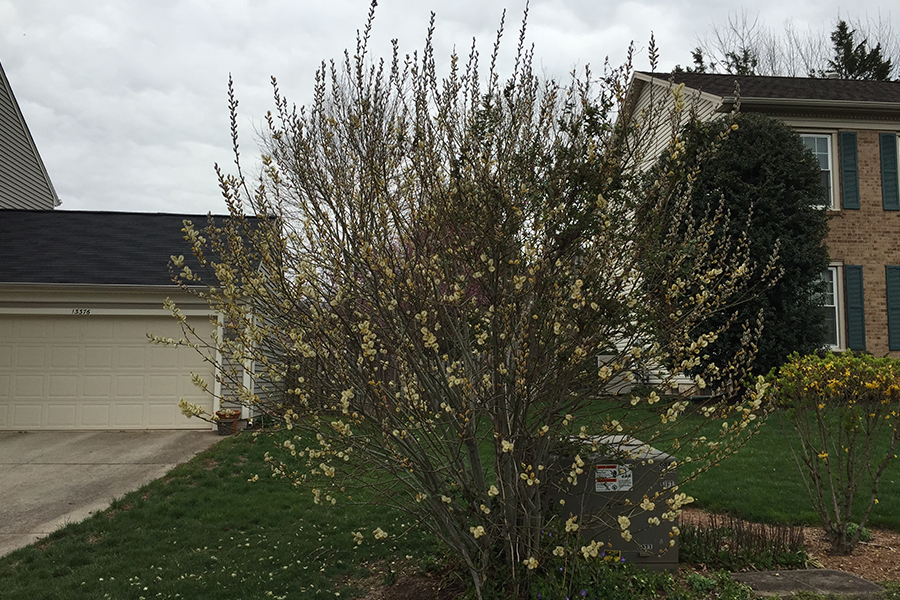Salix discolor
Pussy willow’s silver flowers are called “catkins,” and closely resemble the fur of a cat. In old English “puss” means cat, hence the name pussy willow.
Location
Take a stroll from the corner of May and Lovell Streets along Larch Lane and see if you can find the pussy willow.


History at Hadwen
Pussy willow was one of the original species planted by Hadwen himself at the Hadwen Arboretum. A newspaper clipping from 1882 shows that Hadwen cultivated six species of willow. One pussy willow is still found in the arboretum today, planted by Clark University volunteers in 2022.
Keep Learning
Detailed Species Information
Pussy willow is a deciduous willow shrub in the family Salicaceae native to North America. It is found in the forests and wetlands of southern Canada and in the Great Lakes region and New England. This shrub or small tree typically grows to a height of 20 feet (6 meters). It has broad, green oval-shaped leaves and flowers called catkins which are small, silver-colored, and fur-like in texture. The willow is named after its catkins, which resemble a cat’s fur, hence the name pussy willow.
The fruit of the pussy willow is a small capsule covered in seeds attached by a soft, down-like structure.
The pussy willow is commonly found in cool, boreal forests and wetlands. It serves as a common larval host for many species of insects and a crucial source of pollen for bees. Because of the unique, furry catkins, pussy willow is commonly cultivated for flower arrangements.
